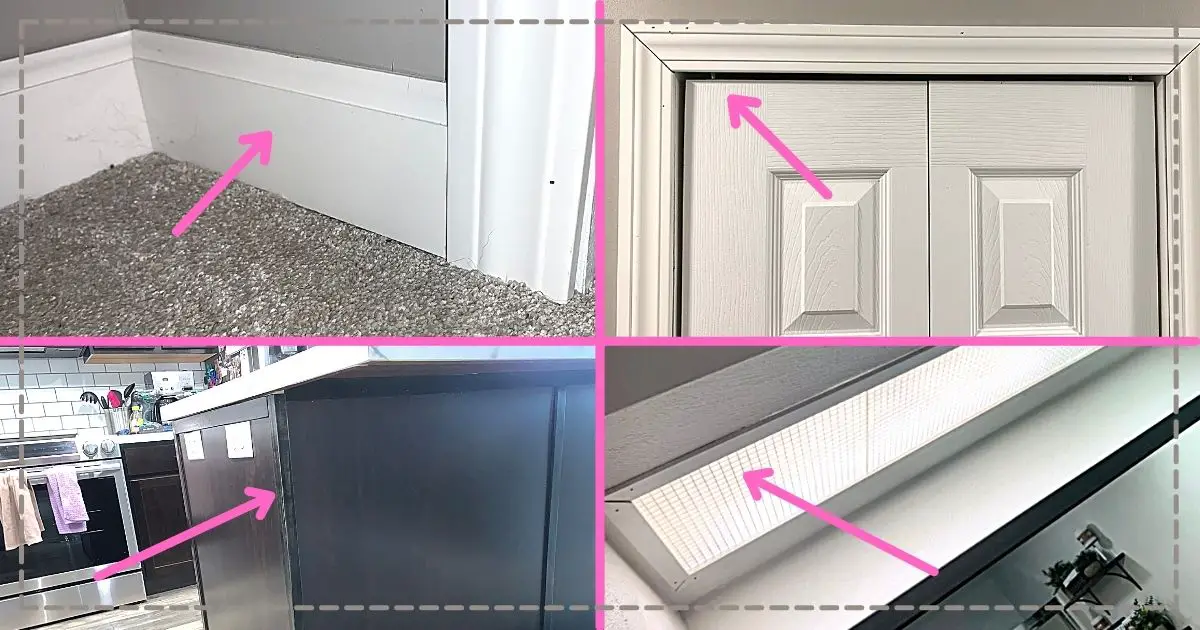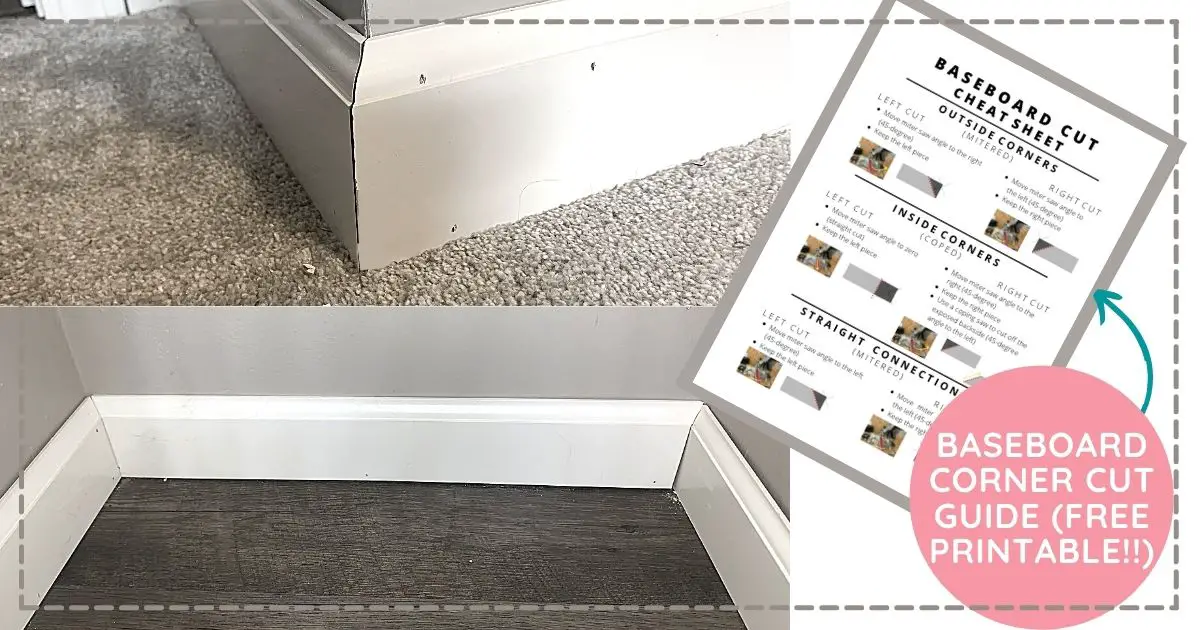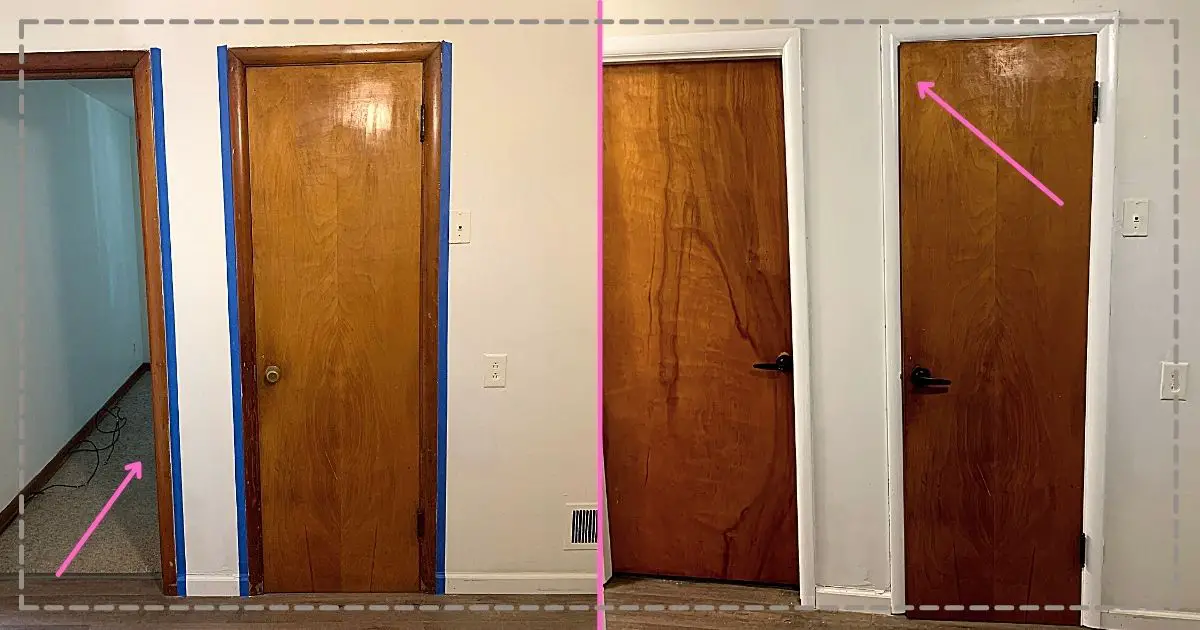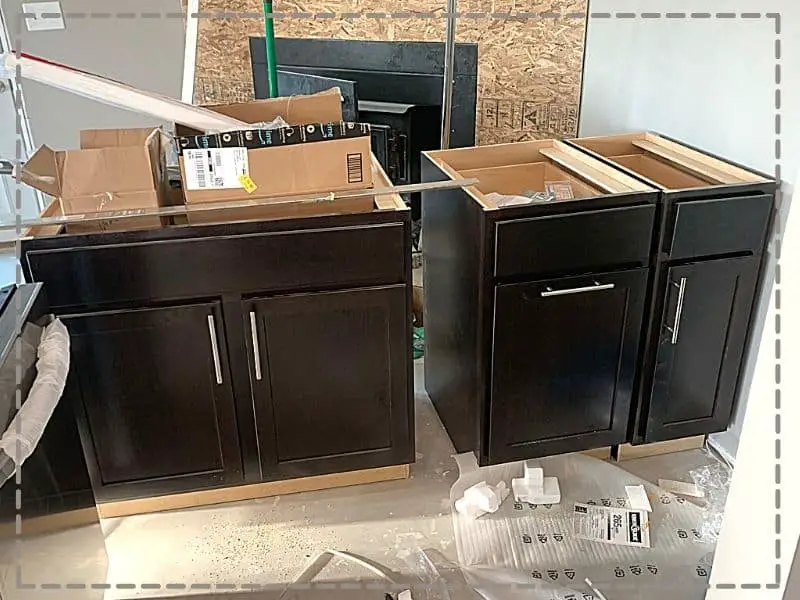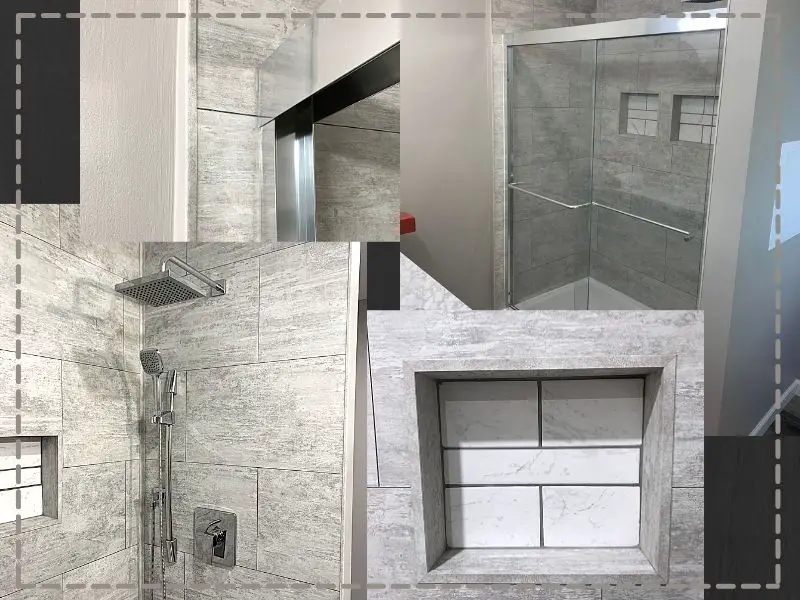*My posts may contain affiliate links, which means I may receive a small commission, at no cost to you, if you make a purchase through a link! Thank you for supporting my website!*
Last updated on March 4th, 2024 at 01:27 pm
Wondering what is the difference between casing, trim, moulding, baseboard, etc., and when you should use each? Well, look no further because I have your answer!
Trim refers to all different types of casing and moulding. Trim is used to cover gaps between different parts of the room or to add a decorative dimension to the wall.
| Type Of Trim | When To Use |
|---|---|
| Casing | Covers gaps between windows/doors and walls |
| Baseboard Moulding | Covers gaps between flooring and walls |
| Crown Moulding | Decorative trim between walls and ceiling |
| Shoe Moulding / Quarter-round | Covers gaps between baseboard and flooring |
| Cove Moulding | Covers gaps in inside corners (for closets, etc) |
| Corner Moulding | Covers gaps on outside corners (for cabinets, etc) |
| Chair Rail & Wall Trim | Decorative trim installed 32″ – 36″ up the wall to prevent a chair from damaging a wall when scooted out |
| Mullion Trim | Covers gaps between multiple windows or door openings |
| Lattice Trim | Small, plain trim that can be used for multiple purposes |
| Rosettes | Decorative trim that can be added to the four corners of door casing |
| Wainscotting | Decorative paneling that goes 32″ – 36″ up the wall to add a design to a room |
Now that we’ve got the basics out of the way, let’s break down each type of trim and bring in some pictures so you can see when it’s best to use each type.
Let’s dive in!
Quick Navigation: Different Types Of Trim & When To Use
- What Is Trim?
- What Is Casing & When To Use?
- What Is Baseboard Moulding & When To Use?
- What Is Crown Moulding & When To Use?
- What Is Shoe Moulding/Quarter-round & When To Use?
- What Is Cove Moulding & When To Use?
- What Is Corner Moulding & When To Use?
- What Is Chair Rail & Wall Trim & When To Use?
- What Is Mullion Trim & When To Use?
- What Is Lattice Trim & When To Use?
- What Are Rosettes & When To Use?
- What Is Wainscotting & When To Use?
- Final Thoughts
What Is Trim?
Before we dive into the various types of trim and their differences, we must first discuss what trim means.
Trim refers to all of the different types of trim and moulding in a house. Baseboard, shoe moulding, crown moulding, chair rail, mullion, etc. are all considered trim.
In general, trim is used to either cover a gap between two areas of the house (i.e. a gap between the flooring and wall or between the windows and a wall) or to add a decorative 3D feel to a wall.

Now, let’s go over the various types of trim and when it’s best to use each.
What Is Casing & When To Use?
Casing refers to the trim that goes around windows and doors.
The casing is used to cover gaps between the drywall/plaster and the door or window frame.
Casing can be as plain or ornate as you want. Craftsman casing and ranch casing are more simple, clean designs while colonial casing adds more dimension to a window or door.
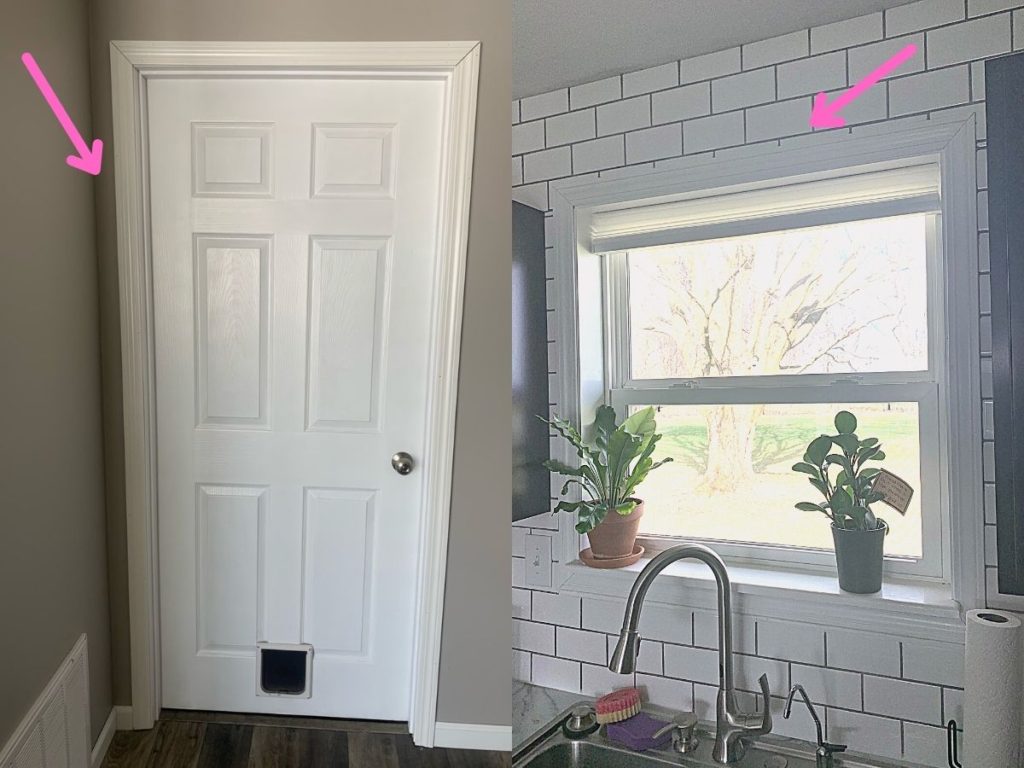
What Is Baseboard Moulding & When To Use?
Baseboard moulding (often only referred to as baseboard) refers to the trim that goes between the wall and the floor.
The baseboard is used to cover gaps between the drywall/plaster and the flooring (carpet, vinyl, laminate, tile, etc).
Just like the casing, the baseboard can be as plain or ornate as you want. You want your casing and baseboard to be the same style (i.e. colonial for both or ranch for both) so that they complement each other and look seamless throughout the room.
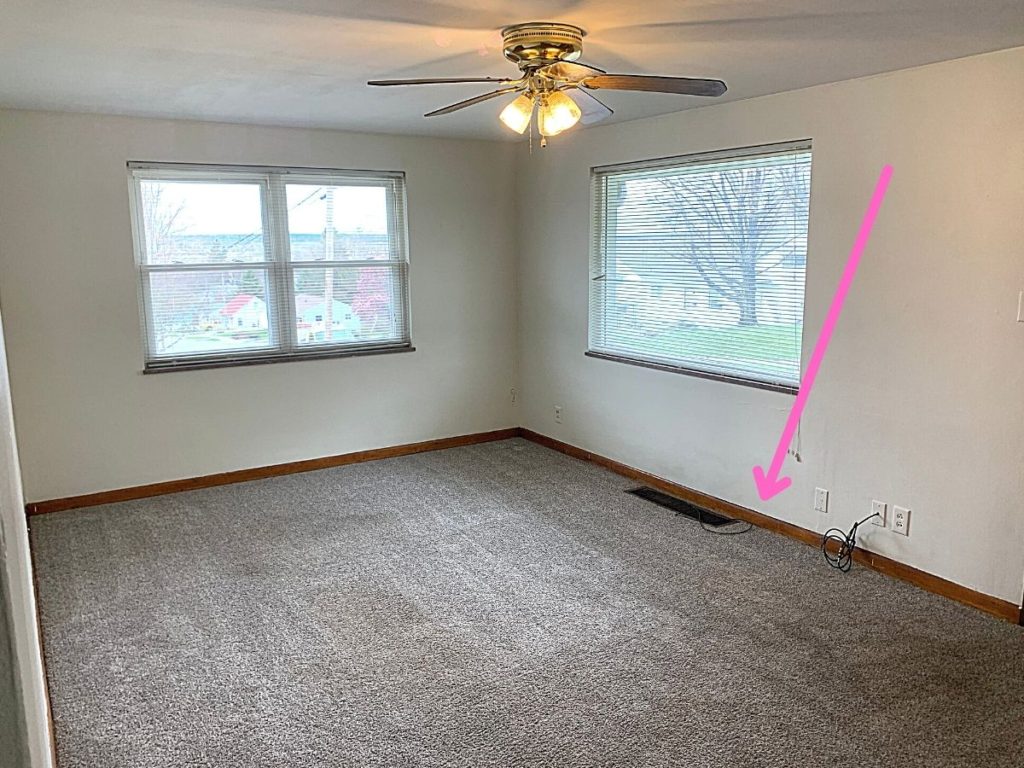
What Is Crown Moulding & When To Use?
Crown moulding refers to the trim that goes between the ceiling and the walls.
Crown moulding is used as a decorative addition between the drywall/plaster and the ceiling. It is not a necessity to be installed in a house, but rather, a pretty upgrade.
Typically an ornate piece of trim, crown moulding adds more dimension and design to a typically plain spot between the walls and ceiling.
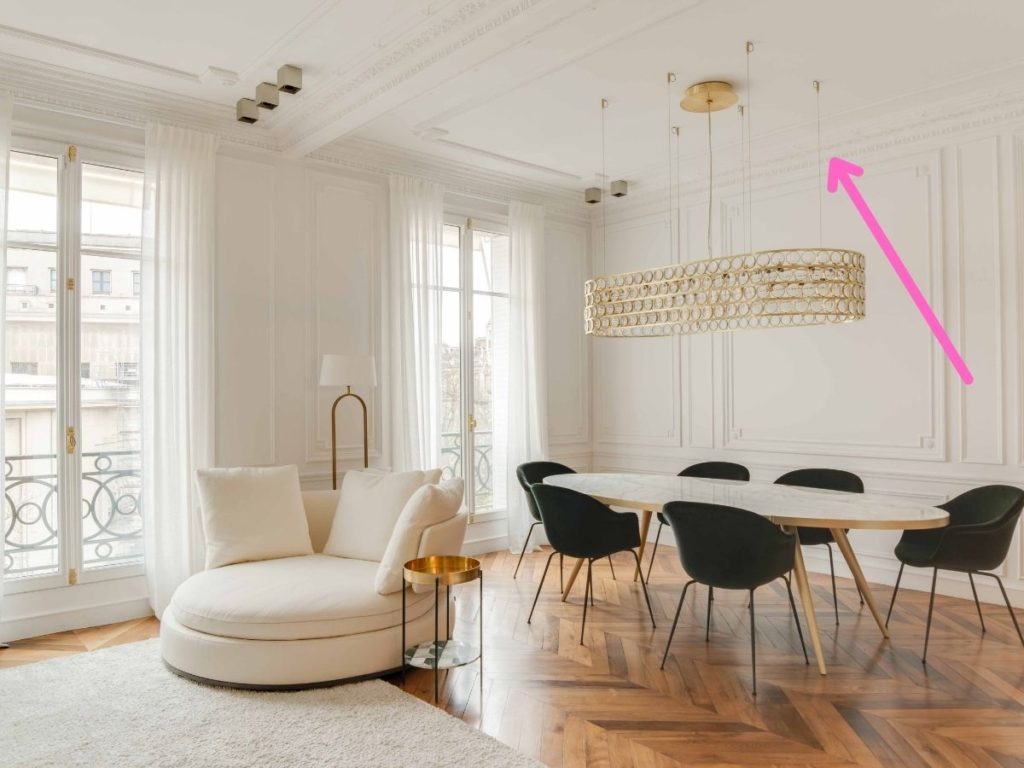
What Is Shoe Moulding/Quarter-round & When To Use?
Shoe moulding refers to the trim that goes between the baseboard and flooring.
The shoe moulding or quarter-round is used to cover gaps between the baseboard and flooring if the flooring is replaced and you do not want to remove and reinstall the baseboard.
For full renovations and new constructions, it’s not required to use shoe moulding or quarter-round because the flooring will be installed before the baseboard.
These two types of trim will be used more frequently during small, flooring replacement jobs because the baseboards can be left in place while just the flooring is replaced.
Then to bridge the gap between the existing baseboard and the new flooring, quarter-round or shoe moulding can be installed.
In addition, shoe moulding and quarter-round can also be used to protect the baseboard. It is easier and cheaper to replace than replacing the entire piece of baseboard.
So, if you like the extra decorative look of baseboard and shoe moulding and you want to protect the baseboard, then you can install both on new construction/a full renovation as well.
There is no hard and fast rule to the use of this type of trim.

What Is Cove Moulding & When To Use?
Cove moulding refers to the trim that goes in inside corners.
The cove moulding is a versatile piece of trim that can be used to cover gaps or uneven inside corners on a variety of projects.
One example of the use of this trim is hiding the track on a bifold door. The cove moulding will fill the inside corner between the metal track and the door frame to give an otherwise ugly feature, and more decorative and finished look.
To see how to use this trim around a bifold door and hide the track, check out my tutorial here.
Cove moulding can also be used against inside corners where cabinets meet a wall or to fill inside corners between other trim and the wall.
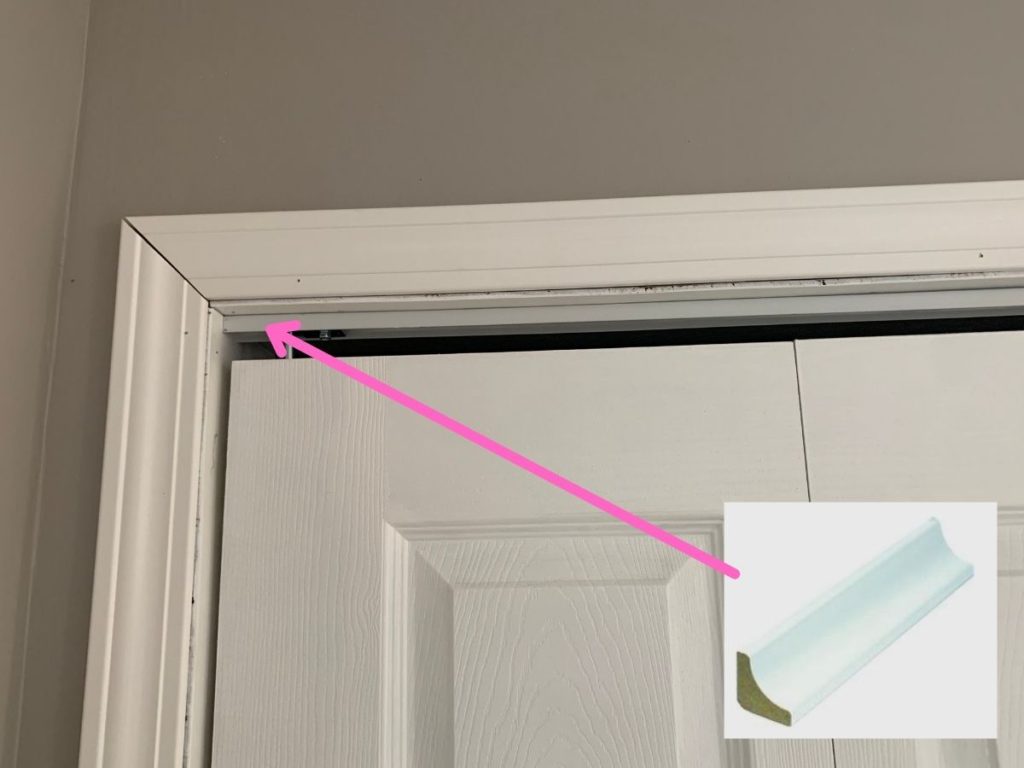
What Is Corner Moulding & When To Use?
Conversely, corner moulding refers to the trim that goes on outside corners.
The corner moulding is a versatile piece of trim that can be used to cover gaps or uneven outside corners on a variety of projects.
One example of the use of this trim is to finish the corners on the back panel of a kitchen island. The corner moulding will easily cover the unfinished edge on the cabinet corners and give more decorative and finished look.
To see how to use this trim to finish the back panel of a kitchen island, check out my tutorial here.
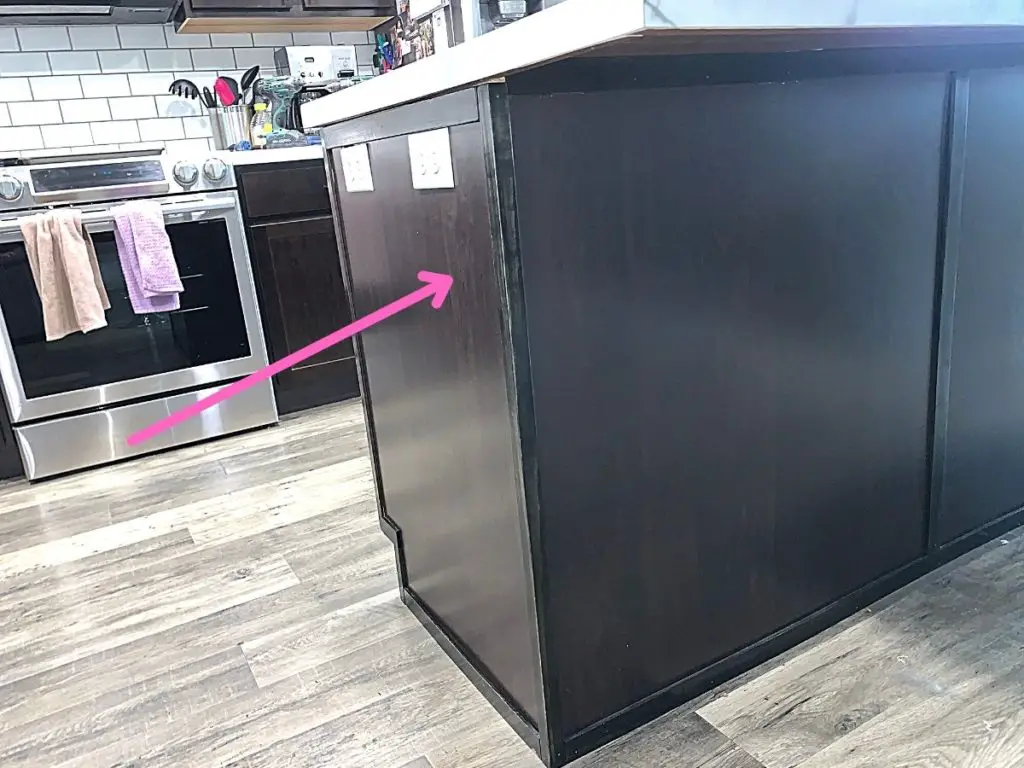
What Is Chair Rail & Wall Trim & When To Use?
Chair rail trim (sometimes referred to as wall trim) refers to the trim that protects a wall from being damaged by a chair hitting it while being used.
The chair rail is installed 32″ – 36″ up the wall to prevent a chair from damaging a wall when scooted out. It is a decorative piece of trim that is not common in modern houses but is very common in older homes.
A chair rail is an optional piece of trim that can be useful if a couch is pushed up against a wall or a smaller room with a dining table requires guests to sit rather close to the wall.
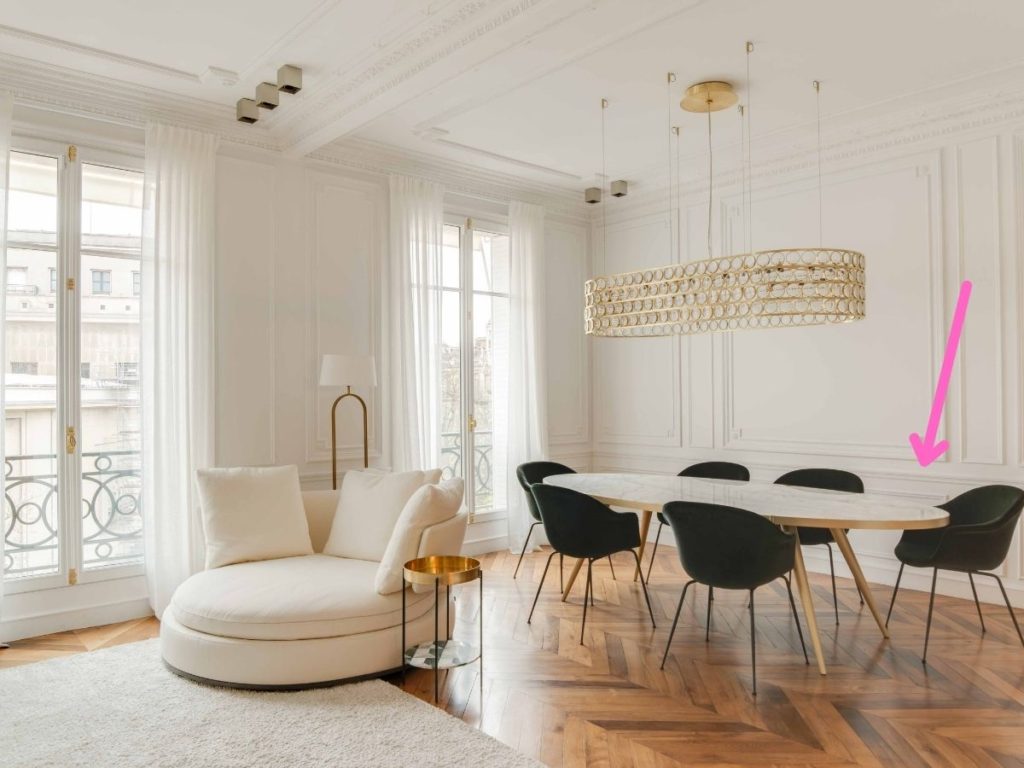
What Is Mullion Trim & When To Use?
Mullion trim refers to the trim that goes between multiple windows or between a door and the sidelights.
The mullion trim is used to cover gaps or unevenness between multiple windows or door openings. This trim has a mound shape so that it pops off the wall in the center and blends into the windows or door/sidelight evenly on both sides.
Mullion trim is a decorative addition that is commonly found between a front door and the sidelights.
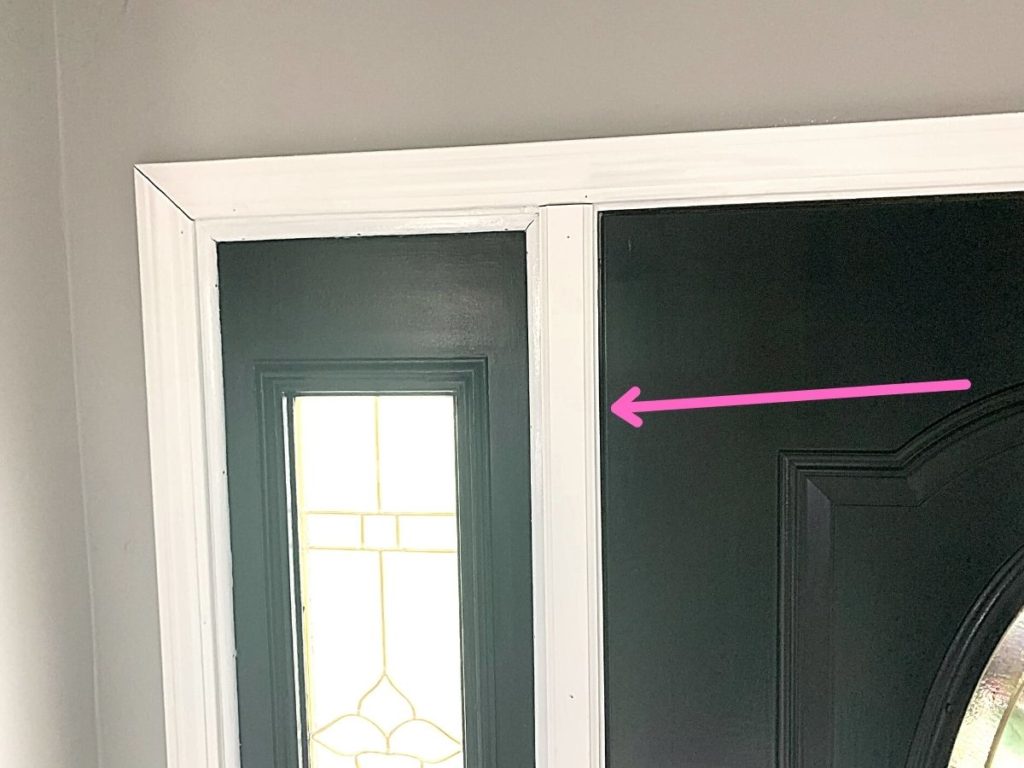
What Is Lattice Trim & When To Use?
Lattice trim (sometimes referred to as multi-purpose trim) refers to plain, rectangular/square/flat trim that has a variety of purposes.
The lattice trim comes in a variety of shapes and sizes and can be a term used to describe quarter-round, stock moulding, and any other moulding that doesn’t fit in other categories.
If your project needs a plain piece of trim, then lattice trim is likely what you will want to use.
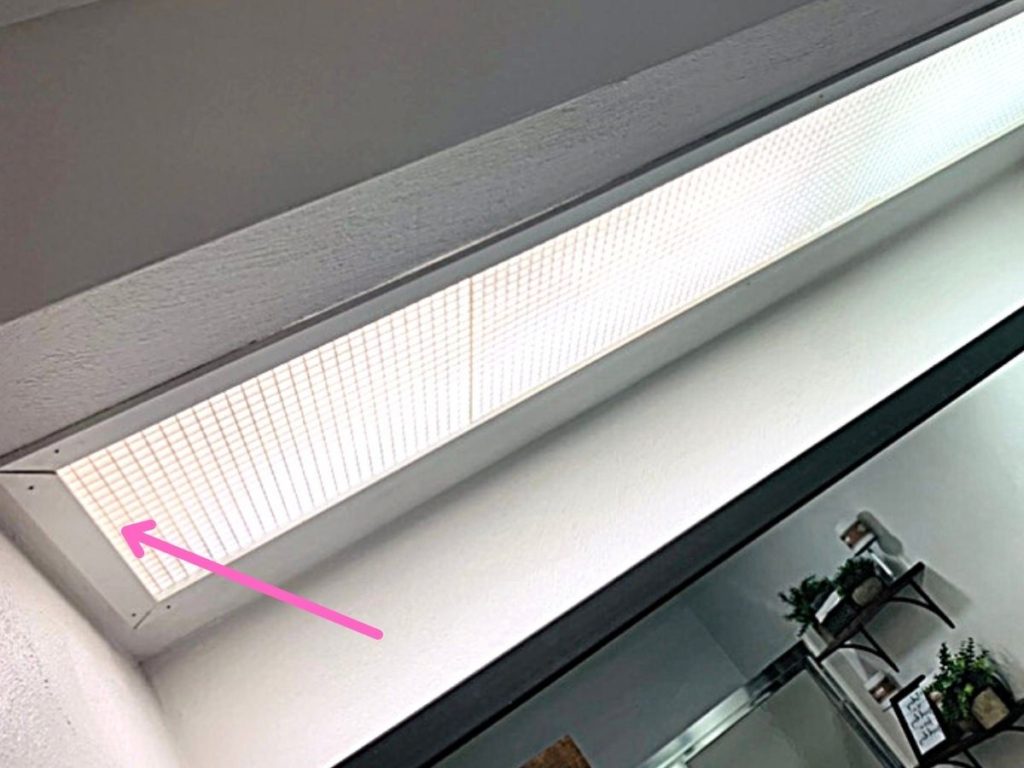
What Are Rosettes & When To Use?
Rosettes refer to the square decorative corner pieces that can be found in the corners of the door and window casing.
The rosettes are the perfect substitutes to avoid needing mitered cuts in the corners of the door or window casing while also adding another decorative element to the casing.
Instead of making complicated mitered corner cuts or just butting up the casing in the corners, use the rosettes to only require straight cuts and give a finished and clean look to a door or window.
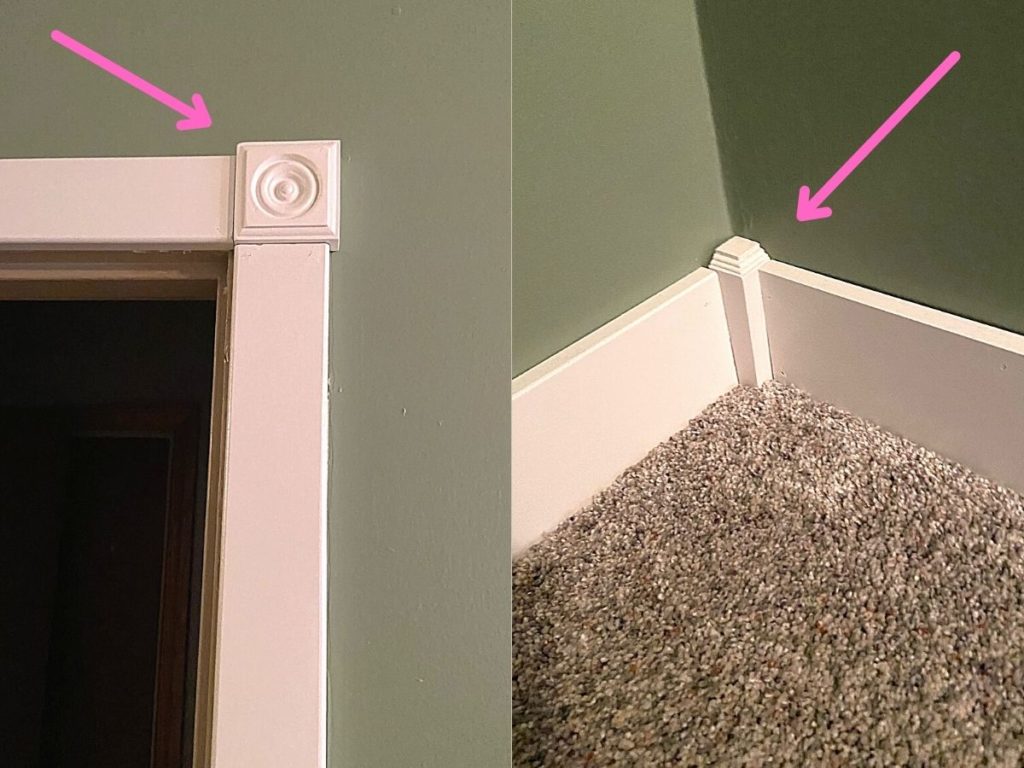
What Is Wainscotting & When To Use?
Wainscotting refers to wood wall panels that decorate part of the wall. The typical wainscotting height is 32″-36″, but more modern versions can be seen up to 72″ up the wall.
Wainscotting is a purely decorative type of trim that is used to add dimension to an otherwise plain and boring wall.
Typical wainscotting is a type of panel that is glued or nailed to the wall while custom, faux wainscotting can be built onto the wall using other decorative trim pieces that are cut and painted over to create a custom design.
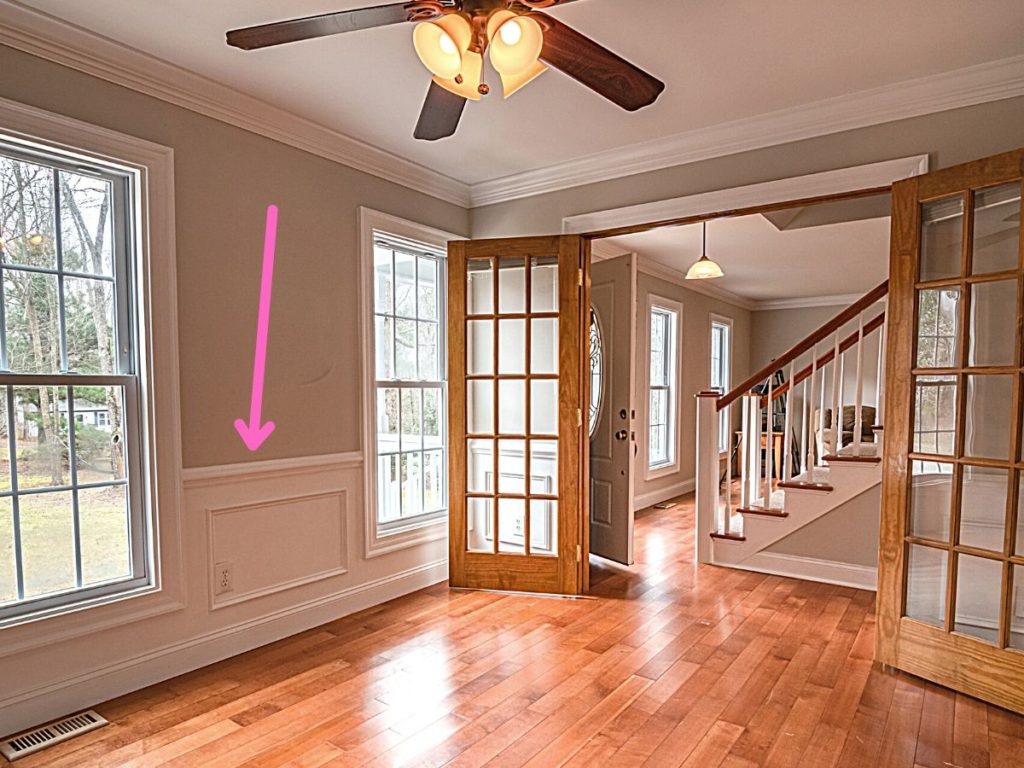
Final Thoughts On The Different Types Of Trim
There you have it!
Trim comes in many different shapes, sizes, and designs. For the most part, trim is a functional addition to your home and it adds major decorative points.
It can easily take a plain space and jazz it up for not a lot of time, effort, or money. My kind of DIY project!
Hopefully, this article helps you decide which pieces of trim you need in your home.
Catch you in my next post!
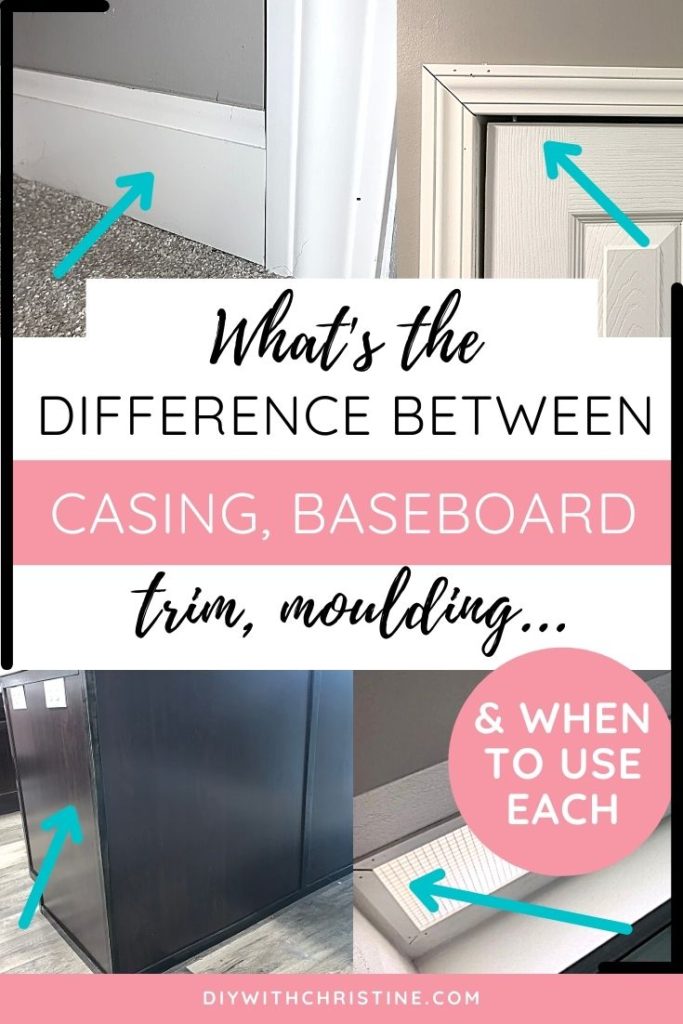

By Christine
Christine is a blogger and DIYer who tackles home renovation and decorating projects alongside her husband, Adam, for their personal residence and rental properties. Although she successfully tackles large renovation projects to avoid expensive contractor fees and bring her vision to life now, her path to success was not easy.
Go here to read her story, “From a Clueless First-Time Homebuyer To A Confident DIYer Creating Her Dream Home One Project At A Time“.
Popular Posts
DIY With Christine is a participant in the Amazon Services LLC Associates Program, an affiliate advertising program designed to provide a means for sites to earn advertising fees by advertising and linking to Amazon.com.

